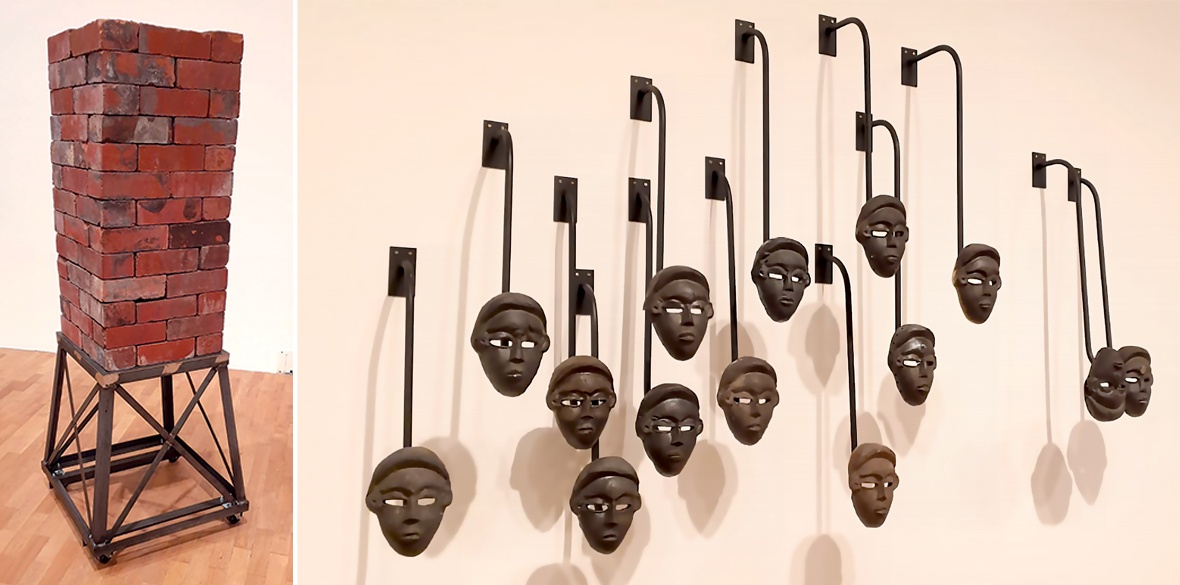This is the last article you can read this month
You can read more article this month
You can read more articles this month
Sorry your limit is up for this month
Reset on:
Please help support the Morning Star by subscribing here
Theaster Gates: A Clay Sermon
Whitechapel Gallery
CLAY SERMON is what it says it is – a measured, uplifting visual oration on the constructive companionship humans and clay have had in the last century or so.
In the wide open square spaces of the Whitechapel gallery two dozen or so works illustrate Theaster Gates’ spiritual and utilitarian creative range.
Humans and clay got truly acquainted in the Neolithic period –about 13,000 years ago – which is often referred to as the Age of Clay. Rather surprisingly this coming together manifested itself almost simultaneously across the entire globe and, with very few technological adjustments, has served us well until the present.
All major cultures of antiquity claim – without much evidence beyond hearsay – that God himself thought clay was good enough to make the first human with it. Believe what you will but this is essentially a poetic encapsulation of our species’ deep affection for this most supple of materials.
Clay pottery charts humankind’s cultural progression through millenia and is the “lingua franca” of archaeology as indispensable evidence of settled civilisation. Its nobility transcends stone, wood or iron as it has never been tainted by a weapon of war applications – beyond domestic marital skirmishes.
Gates is by trade an educator -– a professor at the University of Chicago in the Department of Visual Arts and the Harris School of Public Policy – and this may or may not explain the eclecticism in his work and the plurality of idioms and references form disparate cultural traditions from across the continents.
An all important inclusion in the exhibition is that of an 1869 pot by African-American slave David Drake who worked on a plantation in South Carolina, wrote poems and signed his stoneware pots at a time when literacy was outlawed among slaves. The large vessel has a hypnotic quality – a sermon on resilience and indomitability of the spirit.
Black masks dominate one wall assembled into a communal Chorus – formally perhaps a salutation of the Japanese Noh or the Fang Vuvi masks from Gabon.
Gates’s own pottery, intriguingly “scattered” on floor level, some of odd shape, incites light-hearted reflection with the intriguing spacial arrangement.
The utilitarian in him has a a deeply emotive perception of bricks, an interest melded with his passion for returning dilapidated buildings to social use, which earned him an accolade from the Smithsonian magazine: “Gates is revitalising Chicago’s South Side, one vacant building at a time.”
At the Whitechapel this takes a more contemplative form of two stacks of bricks as if waiting for delivery to a Chicago South Side site, their purpose worthy and honest.
Each one handcrafted by him they symbolise recovery, transformation and an ordered future. No apotheosis here merely the signalling of the absolute necessity of their existence.
Gates has been invited to design the 2022 Serpentine Pavilion, the annual architectural commission that has not knocked socks off anybody since Burkina Faso Francis Kere’s “Tree” in 2017. He was awarded the Légion d'Honneur in 2017.
Ends January 9 2022. Free entry but booking required at www. whitechapelgallery.org or telephone +44 (0)20 7522 7888












